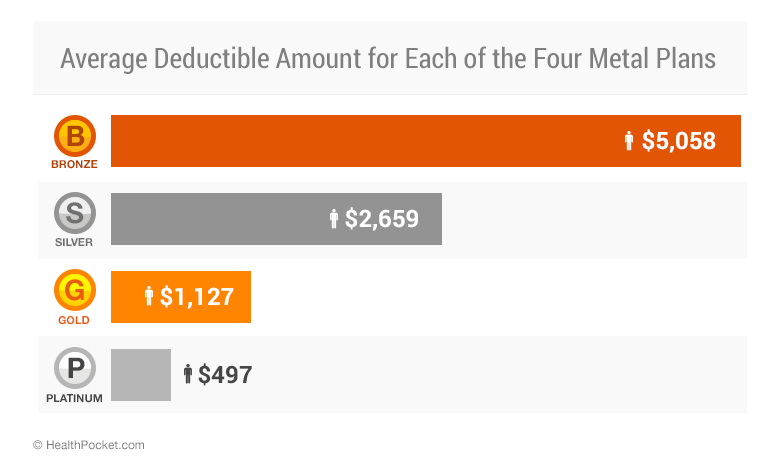* The bronze plan had a coinsurance fee while the silver plan had
a flat fee copayment amount.
As the table above demonstrates, changes in deductibles and physician
copayments do not change proportionally with the actuarial value changes among
metal tiers.
Conclusion
Available data from the public 2015 rate filings reveal the changes in
out-of-pocket costs are not following a consistent trend among the different
metal plans. Differences in plan actuarial value is not necessarily helpful in
understanding how out-of-pocket costs will differ. However, it is unclear
whether this state of affairs will continue as more states release their rate
filings to the public.
The rate filings process itself is problematic with respect to consumer
transparency. Not all states have released their filings. In order for consumers
to have a meaningful role in the process of American healthcare reform, data
such as health insurance rate filing documents should be made available for
public scrutiny prior to approval of rates. Moreover, a standardization of the
rate filings in a format that allows for easy loading into data analysis tool
would speed the ability of researchers to provide initial data analyses to the
public for their review and potential improvement.
METHODOLOGY
Data in this study regarding health plans was derived from qualified health
plan rate filings within the individual and family health insurance market for
the calendar year beginning January 1, 2015. Cost-sharing data was collected for
bronze, silver, gold, and platinum plans in the individual health insurance
market. Small group, large group. Medicare, and other health plans outside the
individual market were not included in this study. On-exchange stand-alone
dental plans were also excluded from this study. The cost-sharing categories
examined were deductibles, annual limits on out-of-pocket costs, and fees for
doctor and specialist visits. Other cost-sharing categories such as prescription
medication co-payments, Emergency Room charges, or co-insurance fees for major
medical procedures were not included in this study. All out-of-pocket costs
assume covered medical services delivered by in-network healthcare
providers.
Rate filings were gathered from the following states:
- Arizona
- Connecticut
- Indiana
- Maine
- Michigan
- North Carolina
- Rhode Island
- Tennessee
- Virginia
Rate filings must be approved by the state department of insurance and, as
such, may be rejected or may require alteration before final approval is given
to the health plan. Disapproved or withdrawn filings were not included in the
study. When discrepancies existed within the filings, plan attributes entered as
inputs within the actuarial calculations were given privilege.
All out-of-pocket costs assume in-network delivery of covered medical
services and no reduction in cost-sharing due to income-based government
subsidies.
AUTHORS
This analysis was written by Kev Coleman, Head of Research & Data at
HealthPocket, and Jesse Geneson, data researcher at HealthPocket. Additional
data collection and analysis was performed by Katherine Bian. Correspondence
regarding this study can be directed to Mr. Coleman at
kevin.coleman@healthpocket.com.
Kev
Coleman on Google+
Jesse
Geneson on Google+
Sources:
1States were limited to ones that made rate
filings available to the public for review. The states examined were: Arizona,
Connecticut, Indiana, Maine, Michigan, North Carolina, Rhode Island, Tennessee,
and Virginia.
2Kev Coleman and Jesse Geneson. gDeductibles,
Out-Of-Pocket Costs, and the Affordable Care Acth HealthPocket.com (December 12,
2013). http://www.healthpocket.com/healthcare-research/infostat/2014-obamacare-deductible-out-of-pocket-costs
3gFact
sheets: HHS 2015 Health Policy Standards Fact Sheet.h CMS.gov. (March 5, 2014).
http://www.cms.gov/Newsroom/MediaReleaseDatabase/Fact-sheets/2014-Fact-sheets-items/2014-03-05-2.html
4Data
obtained from Healthcare Bluebook. Office visit, established patient, level 2:
$83.https://healthcarebluebook.com/page_ProcedureDetails.aspx?id=224&dataset=MD&g=Office+Visit%2c+Established+Patient%2c+Level+2
Office visit, new patient, complex issue: $387. https://healthcarebluebook.com/page_ProcedureDetails.aspx?id=222&dataset=MD&g=Office+Visit%2c+New+Patient%2c+Level+5
5The
Centers for Medicare & Medicaid services have asserted that Actuarial Value
categories, along with Essential Health Benefits standards, gwill significantly
increase consumersf ability to compare and make an informed choice about health
plansc gMetal levelsh will allow consumers to compare plans with similar levels
of coverage, which along with consideration of premiums, provider networks, and
other factors, help the consumer make an informed decision.h http://www.cms.gov/CCIIO/Resources/Fact-Sheets-and-FAQs/ehb-2-20-2013.html
© 2014 HealthPocket Inc.
